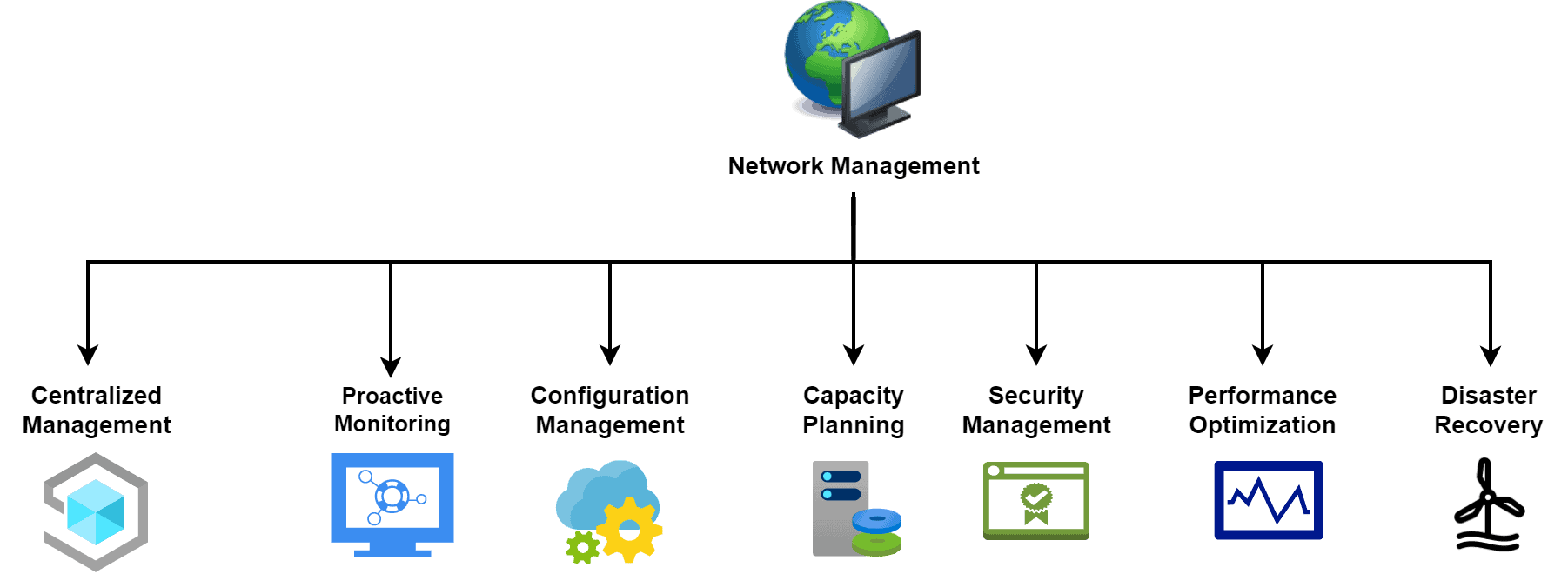1. Overview
In this tutorial, we’ll discuss Simple Network Management Protocol (SNMP).
Furthermore, we’ll highlight the main advantages and disadvantages of this protocol.
2. Network Management
Network management principles refer to the guidelines for monitoring, controlling, and optimizing computer networks. Additionally, these principles ensure the availability, reliability, security, and performance of networks.
Let’s discuss some fundamental network management principles:

Network management should be centralized to allow for easier administration, control, and monitoring of network devices. Hence, network administrators should use a single management console to manage all network devices, including switches, routers, and firewalls.
Furthermore, network management should involve proper configuration of network devices and services. Additionally, we need proactive monitoring of network performance, availability, and security.
Proactive monitoring involves detecting and preventing issues before they become critical, such as monitoring for network congestion, packet loss, and security threats.
Additionally, network management also involves other tasks such as configuration management, capacity planning, security management, performance optimization, and disaster recovery.
3. Introduction to SNMP
We utilize SNMP to monitor as well as manage devices connected to networks. Additionally, it allows network administrators to collect data about the performance of network devices and services.
SNMP uses a management station, also known as an SNMP manager, to collect information from SNMP agents running on network devices. Furthermore, the SNMP manager sends requests to the SNMP agents to retrieve performance information about devices. The SNMP agents then respond to these requests by sending back information to the SNMP manager.
SNMP uses a hierarchical structure to organize network devices into groups and subgroups called management information bases (MIBs). Additionally, each MIB contains information about a specific group of network devices or services, such as the status of a printer.
We send SNMP messages using the User Datagram Protocol (UDP). Furthermore, we transmit them over the network in cleartext, which means that they can be intercepted and read by anyone with access to the network. To address this security issue, the recent version of SNMP includes several security features.
SNMP is a widely utilized network monitoring protocol. It’s simple, flexible, and easy to use. However, its cleartext transmission and lack of strong security features in earlier versions can pose security risks. Additionally, network administrators should ensure that proper security measures are in place when using SNMP.
4. Working Procedure
Let’s discuss how SNMP works. SNMP consists of several components:

We deploy SNMP agents on network devices for collecting and storing management information. The agent exposes this information to the SNMP manager when it receives a request from the manager.
Furthermore, we deploy the SNMP manager on a central management system that requests information from SNMP agents. Additionally, the manager can request the agents for specific information about the network device.
When an SNMP manager desires to obtain data from an SNMP agent, it transmits an SNMP request packet to the agent. The SNMP Get request is the most common type of SNMP request. The SNMP manager sends a Get request packet to the agent, requesting information about a specific variable.
When an SNMP agent receives a request, it searches for the requested information in its management information database. If the information is found, the agent transmits a response to the manager containing the requested information. Furthermore, the SNMP Get response denotes the feedback delivered by an SNMP agent to the SNMP manager in reply to a request. Additionally, it contains the value of the requested variable.
An SNMP trap is an uninvited communication transmitted by the SNMP agent to the SNMP manager, denoting an event. When an event occurs, the agent sends an SNMP trap to the SNMP manager.
Furthermore, an SNMP agent can send an SNMP notification to the manager to inform the manager of a special event. Additionally, a special event refers to an event that the manager has previously configured.
5. Advantages and Disadvantages
There’re several advantages and disadvantages of using SNMP for network management. Let’s take a look at the table:
Advantages
Disadvantages
It’s an industry-standard protocol
SNMP vulnerable to security risks
A single protocol can manage and monitor heterogeneous network environments
SNMP messages can be intercepted and read by anyone with access to the network
Simple and easy-to-use
Provides limited functionality for managing and monitoring network devices and services
Ideal choice for small and medium-sized networks
Can’t monitor more complex metrics, such as application performance, user experience, or network latency.
High scalability
Complex and difficult to understand
Its hierarchical structure allows network administrators to organize network devices into groups and subgroups, making it easier to manage large networks
Difficult to create custom management information bases (MIBs) or to interpret MIB data from different devices
A flexible protocol that can monitor a wide range of network devices
For large and complex networks, it can lead to network congestion and performance issues.
6. Conclusion
In this tutorial, we discussed how Simple Network Management Protocol (SNMP) works. Furthermore, we highlighted the main advantages and disadvantages of this protocol.